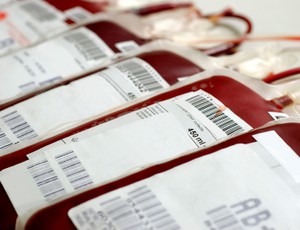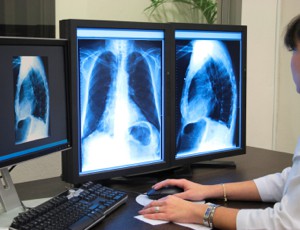Meta-analysis of infusion phlebitis risk with peripheral IV catheters

Incidence of phlebitis with the use of peripheral intravenous catheters during infusion is 31%. Severe phlebitis develops in 4% of all patients” Lv and Zhang (2019). Abstract: INTRODUCTION: Phlebitis is a common complication associated with the use of peripheral intravenous catheters. The aim of this study was to estimate the incidence of phlebitis with peripheral […]
CRBSI rates when using using metal coated central venous catheters

Among the methods considered in this regard is using catheters coated with antiseptic agents, antibiotics, and metals such as silver and platinum (8). Some studies have suggested using these methods for reducing the mentioned infections and their consequences” Ardehali et al (2019). Abstract: Blood infections due to intravenous catheters make up about 10\% — 15\% […]
Population-based active surveillance for culture-confirmed candidemia

Candidemia is a bloodstream infection (BSI) caused by yeasts in the genus Candida. Candidemia is one of the most common health care-associated BSIs in the United States, with all-cause in-hospital mortality of up to 30%” Toda et al (2019). Abstract: PROBLEM/CONDITION: Candidemia is a bloodstream infection (BSI) caused by yeasts in the genus Candida. Candidemia […]
Computer or paper-based insulin infusion algorithm for diabetic ketoacidosis

We aimed to determine the differences in time to diabetic ketoacidosis resolution and incidence of hypoglycemia between computer and paper-based insulin infusion” Younis et al (2019). Abstract: BACKGROUND: Paper-based and computer-based insulin infusion algorithms facilitate appropriate glycemic therapy. The data comparing these algorithms in the management of diabetic ketoacidosis in the intensive care unit (ICU) […]
Position paper on ultrasound guided central and peripheral vascular access

To increase the success rate of ultrasound-guided vascular access procedures, we recommend that providers should utilize echogenic needles, plastic needle guides, and/or ultrasound beam steering when available” Franco-Sadud et al (2019). Abstract: PREPROCEDURE: 1) We recommend that providers should be familiar with the operation of their specific ultrasound machine prior to initiation of a vascular […]
Emerging challenges linked to vascular access in hospitalised patients

Peripheral venous catheters are the most commonly used vascular devices in hospitals. The ageing population and the increase in comorbidities makes their insertion more complex” Massebiaux and Roulin (2019). Abstract: Peripheral venous catheters are the most commonly used vascular devices in hospitals. The ageing population and the increase in comorbidities makes their insertion more complex. […]
Experience with central venous line insertion in Nigeria

Central venous catheterization is an uncommon procedure in most hospitals in the West African subregion. This article presents our initial experience with central line insertion” Edaigbini et al (2019). Abstract: BACKGROUND: Central venous catheterization is an uncommon procedure in most hospitals in the West African subregion. This article presents our initial experience with central line […]
Accuracy of water delivery in enteral nutrition pumps

The purpose of this study was to explore accuracy of delivering 1 L of water by EN pumps using different flush volumes and hang heights” Bertagnolli et al(2019). Abstract: BACKGROUND: Adequate delivery of both enteral formula and water in patients receiving enteral nutrition (EN) is critical. Pump accuracy has been identified as a factor impeding […]
Pre-analytical potassium EDTA sample contamination

We report, for the first time, that K-EDTA sample contamination almost always, if not exclusively, occurs following open phlebotomy methods” Asif et al (2019). Abstract: Background: Potassium ethylenediaminetetraacetic acid (K-EDTA) contamination of serum samples is a common cause of spurious electrolyte results which may adversely affect patient care. The source of K-EDTA sample contamination is […]
Reducing pain and fear in children during venipuncture

This study was conducted to determine and compare the effects of balloon inflation, ball squeezing, and coughing methods on levels of pain and fear during venipuncture in children aged 7-12 years” Aykanat Girgin and Göl (2019). Abstract: BACKGROUND: Venous blood sampling is a common procedure in the hospital setting and cause significant pain and stress […]
Catheter-associated thrombosis in pediatric trauma patients

The purpose of this study was to determine the incidence of symptomatic, catheter-associated thrombosis in critically injured children” McLaughlin et al (2019). Abstract: BACKGROUND: Traumatic injury and the presence of a central venous catheter are 2 of the strongest risk factors for venous thromboembolism in children. The purpose of this study was to determine the […]
Neonatal pericardial effusion and tamponade after umbilical catheter insertion

Pericardial effusion, one of the rare but fatal complications of UVC insertion, requires rapid diagnosis and management” Elbatreek et al (2019). Abstract: BACKGROUND Umbilical venous catheter (UVC) insertion is a standard of care in neonatal units. Pericardial effusion, one of the rare but fatal complications of UVC insertion, requires rapid diagnosis and management, and saline […]
Management of pediatric bone and joint infections according to French guidelines

Short treatments for acute bone and joint infections (BJI) are recommended. We implemented a protocol in 2009 to improve diagnosis and bacteriological documentation, and to shorten antibiotic therapies as per French guidelines” Bréhin et al (2019). Abstract: BACKGROUND: Short treatments for acute bone and joint infections (BJI) are recommended. We implemented a protocol in 2009 […]
Audit of overnight transfusion practice

Overnight transfusion (OT) is the blood transfusion taking place from 9pm to 8am. During this period, patients are exposed to increased risk of errors. This cross-sectional study aims to determine the incidence and practice of OT in University Kebangsaan Malaysia Medical Centre” Tang et al (2019). Abstract; INTRODUCTION: Overnight transfusion (OT) is the blood transfusion […]
Ultrasound-based prediction of cephalic vein cut down for implantable port

The aim of this study was to assess preoperative ultrasound imaging as a tool to predict cephalic vein cut down failure for TIVAD insertion” Staszewicz et al (2019). Abstract: BACKGROUND: Surgical venous cut down is a method for totally implantable venous access device (TIVAD) insertion. The main drawback of this technique is its higher failure […]
Recurrent central venous catheter migration in a patient with brittle asthma

Described is a case with a recurrent complication of device failure secondary to migration of the central venous catheter tip as a result of recurrent coughing episodes” Hignell and Phelps (2019). Abstract: Central venous catheters are widely used in intensive care and critically unwell patients, and reporting of unusual complications is in the interest of […]
Dose prediction software for vancomycin dosing

Vancomycin pharmacokinetics are best described using a 2-compartment model. However, 1-compartment population models are commonly used as the basis for dose prediction software. Therefore, the validity of using a 1-compartment model to guide vancomycin drug dosing was examined” Shingde et al (2019). Abstract: AIMS: Vancomycin pharmacokinetics are best described using a 2-compartment model. However, 1-compartment […]
Physicochemical stability of pembrolizumab admixture solution

The purpose of this study was to investigate the physicochemical stability of pembrolizumab diluted solution (1 mg/mL) at both refrigerated and room temperature conditions for an extended period” Sundaramurthi et al (2019). Abstract: INTRODUCTION: Pembrolizumab is an anti-PD-1 monoclonal antibody, approved and under development for numerous indications in oncology. It is available as either lyophilized powder […]
Reducing gaps between central line guidelines and implementation

The aim of the study was to deconstruct CLABSI prevention guidelines (“during insertion” process only) through the PD approach, working with physicians to identify additional actions that, in practice, help maintain a sterile environment and contribute to patient safety” Cohen et al (2019). Abstract: BACKGROUND: Despite a proven association between the implementation of prevention guidelines […]
Rupture along middle port of a triple lumen catheter

Later CVC was removed, and on examination of the catheter, we noted an intraluminal fibrin clot and a partial tear near the opening of the middle port” Burman et al (2019). Abstract: Central venous catheter (CVC) insertion is a commonly done procedure but associated with some potential complications. In our case, intraoperatively we placed a […]
Etoposide, epirubicin hydrochloride and vindesine sulphate compatibility

In this study, we replaced these drugs with vindesine and epirubicin hydrochloride to reduce the cardiotoxicity and evaluated admixtures containing these drugs along with etoposide in a single infusion bag in vitro” Li et al (2019). Abstract: WHAT IS KNOWN AND OBJECTIVES: The etoposide, doxorubicin hydrochloride, vincristine sulphate, cyclophosphamide and prednisone (EPOCH) chemotherapy regimen is […]
FDA-approved implantable apheresis vascular access device

The PowerFlow Implantable Apheresis IV Port can achieve flow rates necessary for all apheresis therapies and is a promising alternative vascular access device for patients undergoing apheresis” Gray et al (2019). Abstract: BACKGROUND: Patients requiring chronic apheresis treatments typically lack sufficient peripheral venous access to support long-term therapy. Historically, central venous tunneled catheters, septum-bearing subcutaneous […]
RCT compares continuous and short-term cefuroxime infusion

We evaluated bone, subcutaneous tissue (SCT) and plasma pharmacokinetics of cefuroxime in male patients undergoing total knee replacement (TKR) after both traditional short-term infusion (STI) and continuous infusion (CI)” Tøttrup et al (2019). Abstract: Cefuroxime is widely used as antibiotic prophylaxis for orthopaedic procedures. We evaluated bone, subcutaneous tissue (SCT) and plasma pharmacokinetics of cefuroxime […]
Updated OPAT recommendations from the UK

The OPAT UK good practice recommendations for adults and children have recently been updated through a process of literature review, expert consensus and extensive stakeholder consultation” Chapman et al (2019). Abstract: Outpatient parenteral antimicrobial therapy (OPAT) offers safe, effective and patient-centred care for adults and children. The OPAT UK good practice recommendations for adults and […]
Blood transfusion for deep space exploration

Astronauts on exploration missions may be at risk for traumatic injury and medical conditions that lead to life threatening hemorrhage. Resuscitation protocols are limited by the austere conditions of spaceflight” Nowak et al (2019). Abstract: BACKGROUND: Astronauts on exploration missions may be at risk for traumatic injury and medical conditions that lead to life threatening […]
Inadvertent arterial placement of central venous catheters

Inadvertent arterial placement of central venous catheters carries serious sequelae, including pseudoaneurysm development and stroke” Dornbos et al (2019). Abstract: Inadvertent arterial placement of central venous catheters carries serious sequelae, including pseudoaneurysm development and stroke. Although numerous strategies for therapeutic repair after arterial injury have been employed, no treatment provides a definitive standard of care. […]
Double-lumen catheter for hemodialysis dislocated into the mediastinum

The insertion of a catheter into the mediastinum can occur in any patient as a complication” Kusumoto et al (2019). Abstract: The insertion of a catheter into the mediastinum can occur in any patient as a complication. We must check for blood regurgitation not only in the blood removal line but also in the blood […]
Intermittent vs. continuous vancomycin infusion for gram-positive infections

The clinical use of intermittent infusion of vancomycin (IIV) and continuous infusion of vancomycin (CIV) is controversial. The aim of this study was to assess the effectiveness and safety of IIV and CIV by using a meta-analysis for cohort studies and randomized controlled trials” Chu et al (2019). Abstract: OBJECTIVE: The clinical use of intermittent […]
Economic burden associated with peripheral IV catheter-related complications

This study aimed to analyze the clinical and economic impact of peripheral intravenous-related complications on hospitalized patients” Lim et al (2019). Abstract: The burden of complications associated with peripheral intravenous use is underevaluated, in part, due to the broad use, inconsistent coding, and lack of mandatory reporting of these devices. This study aimed to analyze […]
Impact of a simple hygiene insertion bundle on CLABSI rates

The primary aim of this study was to investigate the CRI/CRBSI incidence and the association between potential risk factors, including the introduction of a simple hygiene insertion bundle and CRIs at a large university hospital in Sweden” Thorarinsdottir et al (2019). Abstract: BACKGROUND: Catheter-related infections (CRIs) and catheter-related bloodstream infections (CRBSIs) are among the most […]

